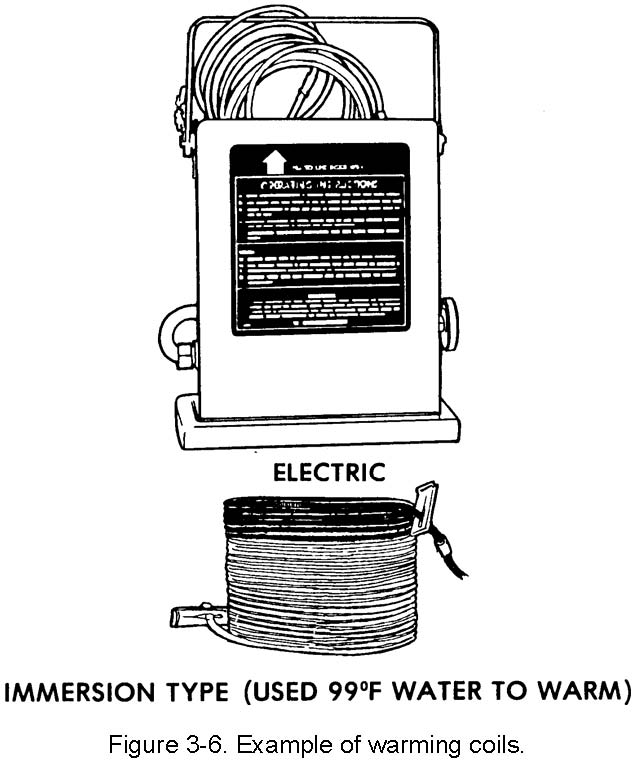Blood, Electrolytes, and Intravenous Infusions
3-26
3-26. SPECIAL CONSIDERATIONS FOR TRANSFUSIONS
a. Introduction. Most of the requirements for the intravenous infusion also apply to the blood or blood component transfusion. There are some additional points that should be noted.
b. Equipment. The needles used are no smaller than 18 gauge (and frequently a larger gauge). A special administration set with filter(s) is required for most blood products.
c. Typing. Unless time and/or access to laboratory services are restricted, all patients should be typed, and the blood used should be cross-matched on all necessary factors. If the transfusion is needed immediately, type O Rh-negative packed red blood cells may be used. In this case, the patient must be checked constantly for hemolytic reaction during the transfusion.
d. Storage. Whole blood, with a preservative added, has a maximum allowable storage time (shelf life) of 35 days. In comparison, many of the parenteral solutions can be stored indefinitely (or at least for several years). During this storage, time the blood must be kept at 1șC to 6șC. This temperature is beyond the capabilities of most field refrigeration units. When a blood unit is delivered for use, it should not stand unnecessarily at room temperature. Delayed transfusion will add to the possibility of bacterial growth. If the blood unit must be kept at a field location and adequate refrigeration is not available, it should be stored in a Styrofoam container with a cloth divider covered with a bag of ice.
|
|
e. Rejecting Donor Blood. If a blood unit appears abnormal in any way, it should not be used. The blood unit should not be used if:
(1) The blood unit looks purple or brown.
(2) Clots are visible.
(3) There is an obvious breakdown of blood cells.
(4) There is leakage from the container.
f. Warming of Blood. In cases where a large amount of blood is to be transfused at one time, the blood will need to be warmed. If too much cold blood is transfused at once, the patient can go into shock caused by hypothermia. Examples of blood warming coils are shown in Figure 3-6. Use of these coils should be directed by experienced personnel.


